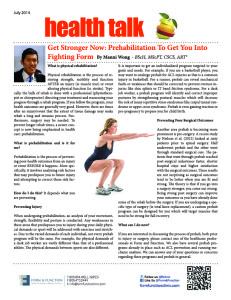Be sure to wear sport-specific shoes when you play a particular sport for at least three times a week. It is highly recommended that you consult with the Chiropodist to ensure that you are wearing the proper shoe size and type of shoe.
The following are just a few shoe recommendations for different types of sports:-
BASKETBALL
Common foot injuries: sprains, tendonitis, stress fractures
The ideal basketball shoe should:
– Have a thick, stiff sole that gives support while running and landing jumps.
– Have a high ankle construction that supports the ankle during quick changes in direction.
SOCCER
Common foot injuries: ankle sprains, turf toe, ingrown toenails
The ideal soccer cleat should:
– Not have more than a half inch of space between your longest toe and the end of the shoe.
– Feature the stud type for the ground that will be played on most often: soft, hard or firm.
TENNIS & BADMINTON
Common foot injuries: ankle sprains, tendonitis, torn knee ligaments
The ideal court shoe should:
– Have a sufficient amount of heel support. Ensure that the area surrounding the heel is stiff enough and
has adequate padding to prevent injury when making quick changes in direction.
– Ensure that the sole of the shoe is stiff to provide support when running.
–
RUNNING
Common foot injuries: plantar fasciitis, shin splints, toenail conditons
The ideal running shoe should:
– Provide maximum shock absorption, to help runners avoid injuries.
– Match your foot’s arch type (low, medium or high)



